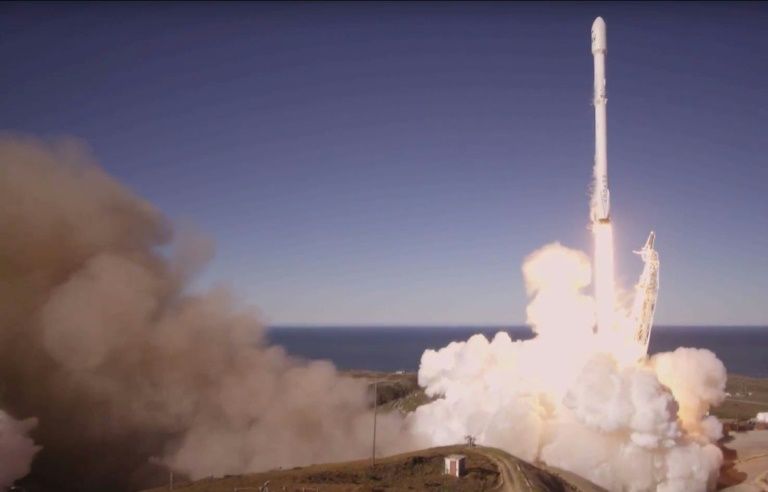Vandenberg Air Force Base in Central California is reportedly planning an unprecedented missile test launch capable of intercepting incoming warheads, reported CBS Los Angeles on Tuesday.
Pentagon spokesman Navy Captain Jeff Davies said Tuesday’s US test was not timed specifically to the current tensions in North Korea but said that “in a broad sense, North Korea is one of reasons why we have this capability.”
“North Korea has expanded the size and the sophistication of its ballistic missile forces,” Davis said. “They continue to conduct test launches, as we saw this weekend, while also using dangerous rhetoric that suggests they would strike the United States homeland.”
Davis also pointed to Iran’s increasing missile capabilities as threatening US strategic interests in the Middle East.
The launch, scheduled for Tuesday afternoon, comes just after North Korea’s recent missile testing, firing over the course of three weeks three ballistic missiles capable of hitting the west coast of the US, ratcheting up tensions over its nuclear weapons ambitions.
Analysts have said the test launch earlier this month was its longest-range rocket yet.
However, several rounds of UN sanctions have done little to stop the isolated regime from pushing ahead with its ambition to develop an intercontinental ballistic missile (ICBM) that can deliver a nuclear warhead to the continental US.
As the threat increases, the US is taking unprecedented measures by test-launching the Ground-based Interceptor in part of its missile defense testing.
According to the Vandenberg Air Force Base, the missile will attempt to fly over the Pacific Ocean and intercept a “target object” launched from the central Pacific Ocean, simulating a North Korean ICBM aimed at US homeland, reported CBS.
In a move that the Pentagon says is akin to hitting a bullet with another bullet — though at far higher speeds — the missile launches into space, then deploys an “Exo-atmospheric Kill Vehicle” that uses kinetic energy to destroy the incoming target.
The launch will apparently be visible to from the LA mainland, but seeing the interception of the missile and target will be unlikely.
If the test is successful, it will prove that America has an effective ground-based defense against ICBMs, albeit on a limited scale.
The system will comprise 44 interceptors by the end of the year, so it could thwart an attack from a rogue state or a volley of rockets.
But the interceptors, based in California and Alaska, would be overwhelmed by a full-scale attack from countries like Russia or China, which could fire dozens of missiles at a time.
Despite Trump’s strident warnings to North Korea, Secretary of Defense James Mattis said in an interview that aired Sunday before the latest launch that a war with North Korea would be “catastrophic.”
“The North Korean regime has hundreds of artillery cannons and rocket launchers within range of one of the most densely populated cities on Earth, which is the capital of South Korea,” he told CBS News.
“This regime is a threat to the region, to Japan, to South Korea. And in the event of war, they would bring danger to China and to Russia as well.
The US has said it is willing to enter into talks with North Korea — but only if it halts its missile and nuclear tests.
(Staff with AFP)
Source:.i24news.tv
 This still image from video obtained from SpaceX shows a Falcon 9 rocket lifting off from Vandenberg Air Force Base, California, on January 14, 2017
This still image from video obtained from SpaceX shows a Falcon 9 rocket lifting off from Vandenberg Air Force Base, California, on January 14, 2017
 This still image from video obtained from SpaceX shows a Falcon 9 rocket lifting off from Vandenberg Air Force Base, California, on January 14, 2017
This still image from video obtained from SpaceX shows a Falcon 9 rocket lifting off from Vandenberg Air Force Base, California, on January 14, 2017